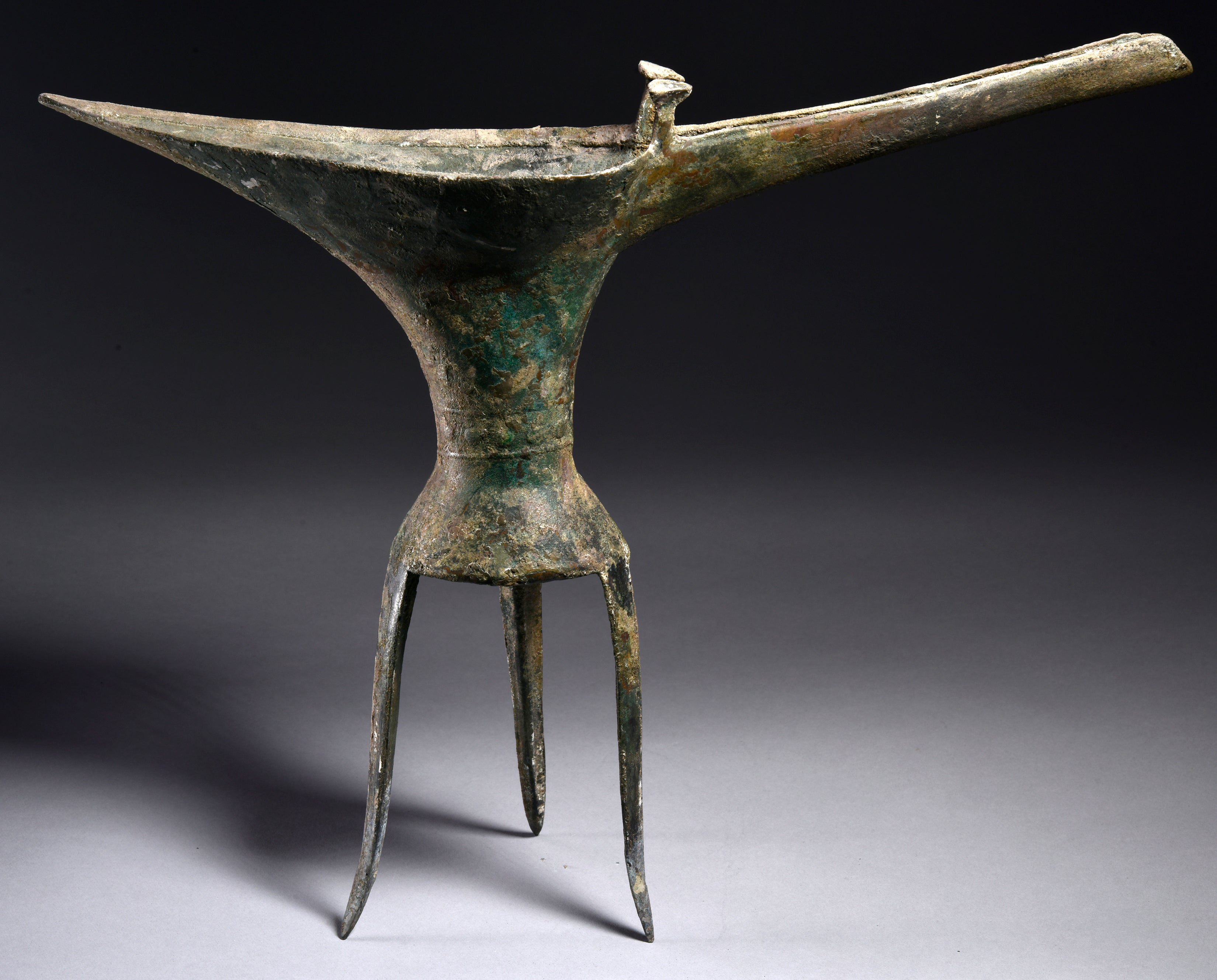Bronze Age boom
THE ARTICLES ON THESE PAGES ARE PRODUCED BY CHINA DAILY, WHICH TAKES SOLE RESPONSIBILITY FOR THE CONTENTS

A dragon-shaped artefact about 27.5in long and made from 2,000-odd pieces of turquoise has been among the most stunning finds at the Erlitou archaeological site in Yanshi district, Luoyang, Henan province.
The relic of the legendary creature of folklore was unearthed from the tomb of a member of the social elite in 2002, along with a bronze bell, and is widely believed to have been used for royal ceremonies.
The dragon and the bell have been linked to the early central dynasty of China, dating back more than 3,500 years. These were a symbol of power and cultural totem.
A stanza of Shijing (The Book of Songs), the oldest extant collection of Chinese poetry (11th to 7th century BC), mentions the use of dragon-shaped flags and bronze bells for sacrificial ceremonies. The dragon may have been used by a kind of royal priest to comfort a departed soul.
“We, the Chinese people, often call ourselves ‘the descendants of dragons’,” says Zhao Haitao, an associate researcher with the Institute of Archaeology at the Chinese Academy of Social Sciences. “The turquoise artefact is solid evidence that our ancestors indeed worshipped the dragon.”
The Erlitou archaeological site, covering more than one square mile, was first discovered in 1959. Over the past 63 years excavation work has covered less than 2 per cent of the total area, leaving a plethora of mysteries still buried. However, the tip of the iceberg has led to the unearthing of a remarkable city.
According to carbon dating, the site is from 1750 to 1520 BC and home to a long list of groundbreaking discoveries. Here archaeologists have found China’s oldest-known urban road network, handicraft workshops administered by the government and groups of ceremonial bronze artefacts. The architecture, encompassing a palatial compound, is the earliest of its type in China, Zhao says.
“The site has greatly expanded our understanding of how Chinese civilisations developed and merged into unity with various sources.”
The heavy mist of history surrounding Erlitou has slowly and steadily cleared. The location and characteristics revealed by its artefacts offer a solution to a long lingering conundrum: It is probably the last capital of the Xia Dynasty (c. 21st century-16th century BC), the first central dynasty recorded in Chinese history.
According to Shiji (Records of the Grand Historian), the foundation text of Chinese history dating back to the first century BC, and Zhushu Jinian (Bamboo Annals), a collection of chronicles completed in the Warring States Period (475-221 BC), the Xia Dynasty existed for 471 years and was ruled by 17 kings over 14 generations.
No written characters have been unearthed at Erlitou to directly establish the identity of its rulers, but this missing piece of a puzzle is no major impediment to claim so. In Zhao’s eyes, whatever has been found beneath the earth so far has already demonstrated “an aura of a dynasty”.
“For example, the arterial roads embraced by walls reflect rigid urban planning. They also indicate ordered social stratification and a ruling system centred on the palatial city, echoed with the discovery of high-level graves.”
How large a territory did the dynasty centred on the Erlitou site once rule? Current archaeological evidence provides no accurate area in numbers, but does spark great curiosity through eyebrow-raising artefacts.
Exquisite bronze wine vessels, the shape of which is known as jue, offer a glimpse of the big picture. As the earliest known Chinese bronze vessels for ceremonial use, the jue of Erlitou are demanding of production technique. The tallest among them is 8.7in high.
“To make these vessels, artisans needed raw materials from distant places,” Zhao says. “A refined casting technology also meant a strong capacity to mobilise efforts across the society. To make even small items a person had to control vast swathes of land. Only kings could do that.”
Wang Wei, a researcher in the Academic Division of History at the Chinese Academy of Social Sciences, says Erlitou marked the first peak of the Bronze Age in China.
“We have found older fragments of bronze vessels elsewhere in China, but the production methods only became systematic in Erlitou. The mould-casting technique led to a boom in the production of bronze ceremonial artefacts, each with intricate designs, which have been inherited by following dynasties.”
Subscribe to Independent Premium to bookmark this article
Want to bookmark your favourite articles and stories to read or reference later? Start your Independent Premium subscription today.